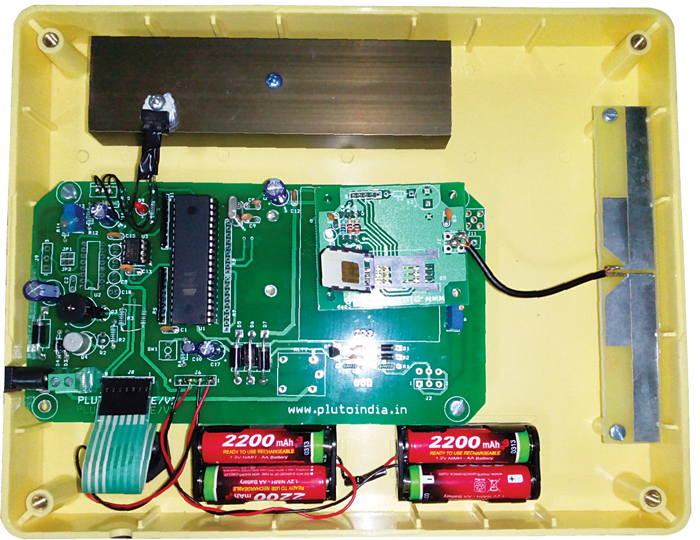B-Safe is a security system that can detect and intimate the users about any intrusion or fire in a locked/closed space. A loud alarm signal is created using a hooter/siren in the system. Moreover, this system can be linked with up to four mobile phone numbers. An SMS is sent and a blind call is made to warn the users about the situation. This system can secure an area covered by an arc of 120° with 18.29 metres (60 feet) radius. It enables customers to have full control over the security of their store house or warehouse, even when they are away from the concerned place. The device can also be activated or deactivated through a phone call from a pre-assigned number. B-Safe is the brainchild of K.G. Karthik, P. Sakthi Prakash and K. Vijayakumar of PLUTO.
How it works
The key component of B-Safe is a passive infra-red (PIR) sensor that detects any motion (and fire) in the area of its installation. Any breach of security is detected by the PIR sensor and the signal is sent to Atmel’s AT89S52 microcontroller. This microcontroller is programmed to turn on a siren, send an SMS and make a blank call to registered numbers whenever an intrusion is sensed in the secured area. Communication is established with the help of SIMCom’s SIM900A GSM module with a SIM card inserted in it.

There are three sensitivity levels of detection that can be configured by the user. Low and medium sensitivity options can be used when there are pets in the room. High sensitivity detects any possible intrusion. All these settings are stored in Atmel’s 24C64A memory. The system also has an in-built battery charging circuit, which accepts most commonly available rechargeable battery models and can withstand six hours of power cut.
Necessity is the mother of invention
The whole idea came up when a farmer—a customer of their Always-On Poultry Incubator—faced a security breach. The farmer had a separate store house for his food grains, where he stored them in packed sacks. Once a thief entered this store house by opening the shed’s roof and managed to steal two sacks of rice grains. This incident prompted the firm to develop an intrusion alarm, which is linked to a user’s mobile phone. Such systems were later installed in this farmer’s and other people’s warehouses.
Integrated into a single box
Though there are similar security devices available in the market, almost all of them have two separate units for a single device—one module contains a PIR sensor and the other incorporates the rest of the components (like the microprocessor with GSM module, etc). The reason for designing two boxes is the large amount of electromagnetic interference created by a GSM modem with antenna, which disturbs the PIR sensor functionality. This may result in a false alarm. However, there are problems associated with having two boxes—the overhead cost of installing two units and the need for a separate battery backup for each.
The team has developed its own antenna that has a radiation pattern, which does not interfere with the sensor‘s performance. Further, the printed circuit board is provided with its own ground plane and sensor is provided with Faraday’s cage or Faraday’s shielding to reduce interference. All these steps help minimise interference inside the system.







Price?